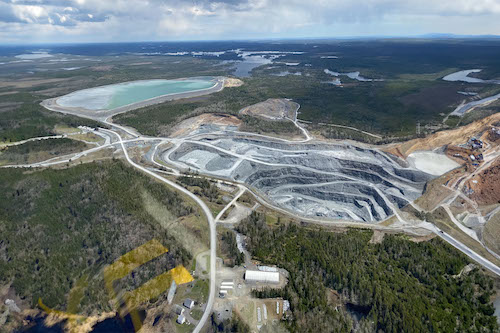Mining in perspective in Nova Scotia
Nova Scotia, the colonial name for Mi’kma’ki that is the unceded land of the Mi’kmaq, has a long and often tragic mining history, much of it built on the backs and the blood of miners. Few will have forgotten the 1992 Westray coal mine disaster in which 26 men perished, which would never have happened if the provincial government had done its job as a regulator, and not been under the influence of the mine owner. Westray was just the most recent of many mine disasters in Springhill and Cape Breton that killed hundreds of miners, many of them just children.

Mining in perspective in Nova Scotia
Nova Scotia, the colonial name for Mi’kma’ki that is the unceded land of the Mi’kmaq, has a long and often tragic mining history, much of it built on the backs and the blood of miners. Few will have forgotten the 1992 Westray coal mine disaster in which 26 men perished, which would never have happened if the provincial government had done its job as a regulator, and not been under the influence of the mine owner. Westray was just the most recent of many mine disasters in Springhill and Cape Breton that killed hundreds of miners, many of them just children.
Although Nova Scotia has a legislated mandate to end its use of coal by 2030, today there are still two active coal mines in the province – one in Trenton, and another in Donkin, Cape Breton, that is currently closed because of numerous safety infractions.
But coal is just part of the bigger mining story. Although not nearly as well known as the ones in the Klondike and in California, since colonization Nova Scotia has undergone three gold rushes. Even as the province has yet to find a way to fully document, let alone clean up more than 3 million tonnes of toxic tailings full of arsenic and mercury left over from those earlier gold rushes, it is now experiencing its fourth gold rush
There are many thousands of mineral licenses devoted to gold exploration in the province. (see map here). There is one open pit gold mine owned by Australia’s St Barbara Ltd in Moose River that has gone into “care and maintenance,” while the company plans to open another nearby. Nova Scotia Enviornment and Climate Change has also approved another new open pit gold mine in Goldboro.
Today, with the urgent need to tackle the climate crisis and stop the use of fossil fuels, it looks as if the province is promoting yet another mining rush in the province, encouraging prospectors and mining companies to search underground for rare earth minerals and other metals needed for electric vehicles and green technologies.
But with the sorry history of lax environmental protection and regulation of the mining industry in Nova Scotia, with its plethora of precious wetlands and watersheds and forests that can help mitigate against climate change, there is much for people in the province to be concerned about, and an urgent need for more public attention to mining issues.
Prospecting in Nova Scotia
Landowners do NOT hold mineral rights to their property. The province does. That means the Province can lease those rights to anyone who will pay the $11.42!
Translation: anyone with a mineral claims lease can drill on your property with or without your permission.
If you would like to register a claim on your own land, you first need to register with NovaROC here. Launch NovaROC to register, then follow this tutorial here to fill in the form to register a prospecting claim on your land. You will need to confirm that you are prospectig for minerals.
